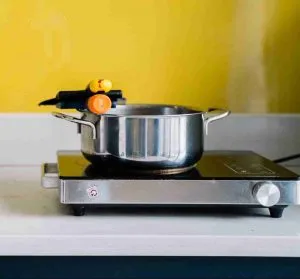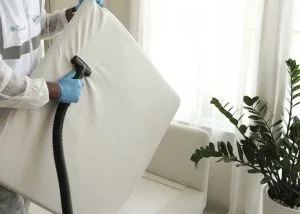Contents
ToggleKey Takeaway:
- Mirror desilvering is a common issue that can occur due to various factors. Understanding the causes and taking preventive measures can help prolong the lifespan of mirrors.
- When considering mirror repair options for desilvering, it is important to assess the extent of damage, consider the cost-effectiveness of different solutions, and choose the option that best suits your needs and budget.
- If resilvering or mirror repair seems too challenging or expensive, opting for custom mirror frames can provide a practical and aesthetically pleasing solution to hide or minimize desilvering.
Starting Right: Understanding Mirror Desilvering
Before diving into the process of repairing a tarnished mirror, it’s essential to grasp what causes this issue in the first place. Mirror desilvering is not just an aesthetic concern—it’s a sign that the mirror’s reflective coating is deteriorating. Common culprits include moisture intrusion, the passage of time, and the corrosive effects of certain chemicals.
Restoring a mirror affected by desilvering isn’t just about concealing blemishes. It’s about using the right materials and techniques to rejuvenate its reflective qualities. By taking a methodical approach, you can not only address the visible signs of wear but also enhance the longevity of your mirror. Let’s explore how you can breathe new life into a fading reflection.
A Closer Look at Mirror Desilvering and How to Address It
The fading charm of a once-pristine mirror is not just about aging—it’s a phenomenon known as mirror desilvering. This happens when a mirror’s silver backing, responsible for its reflective nature, deteriorates. Environmental factors such as moisture and heat are frequent culprits. The result? A mirror that appears cloudy, lacking its characteristic gleam.
But don’t despair if you’re witnessing this faded elegance in your mirror. Restoration is possible. One can opt to strip away the damaged silver layer and reapply a fresh one, or use specialized solutions crafted to restore a mirror’s reflective brilliance. The key lies in understanding the intricacies of the problem and employing the right techniques.
Whether you’re dealing with a treasured heirloom or a modern mirror showing early signs of desilvering, knowing how to repair this issue ensures longevity and continued brilliance for your reflective surfaces. So, the next time you notice that tell-tale cloudiness, remember, with the right approach, you can bring back your mirror’s radiant reflection.
Causes of Mirror Desilvering
The charm and clarity of a mirror lie in its pristine reflective surface, but what happens when this brilliance starts fading? The phenomenon, known as ‘mirror desilvering’, is attributed to various factors:
- The Perils of Moisture and Humidity: These elements can infiltrate the edges or back of a mirror, causing the reflective layer to delaminate from the glass.
- Hazardous Cleaning Agents: Products containing ingredients like ammonia or vinegar might offer a sparkling clean but can compromise the mirror’s protective layer, accelerating desilvering.
- Inevitable Aging: Just like everything else, the materials making up a mirror’s reflective backing have a shelf life. Over the years, this coating can naturally degrade and lose its luster.
The result? A once-clear mirror now marked by diminished reflection and unsightly black spots. Recognizing these culprits is the first step in the journey to restore your mirror’s original glory. Armed with this knowledge, you can take appropriate measures to repair and protect your mirror from future desilvering.
Choosing the Best Repair Route for Your Mirror

Desilvering can tarnish the allure of your mirror, but with the right interventions, its former glory can be regained. If you’re grappling with the challenge of a deteriorating mirror, here’s a roadmap to your repair options:
- Buff and Resurface: Gently buff away the tarnished silver, giving your mirror a new lease on life.
- Mirror Resilvering: Think of it as giving your mirror a refreshing facelift. This involves adding a fresh layer of silver to reinvigorate its reflectivity.
- Mirror Replacement: Sometimes, starting anew is the best route, especially when repairs might not be cost-effective.
- DIY with Repair Kits: If you’re feeling hands-on, there are kits available tailored for the DIY enthusiast, addressing desilvering with step-by-step guidance. For those keen on DIY mirror maintenance, it’s not only about addressing desilvering. Sometimes, you might have to deal with unintended blemishes like spray paint. Learn how to get spray paint off a mirror without causing further damage.
- Professional Touch: When in doubt, leaning on the expertise of professional mirror repair services can be a wise choice. They’re equipped with the tools and knowledge to tackle even the most stubborn desilvering.
- Prevention is Key: Protect your mirror’s shine by ensuring it’s shielded from excessive moisture and aggressive cleaning agents.
It’s worth highlighting that desilvering might signal an aging mirror or a reflection (pun intended) of subpar quality. Regular mirror check-ups and proactive maintenance can keep such issues at bay, ensuring longevity and lasting beauty.
Remember, mirrors have not only served as practical tools over centuries but also as artistic expressions and décor accents. With modern solutions at our disposal, ensuring their longevity has never been more attainable.
Can I Resilver A Mirror Myself?
Taking the reins to resilver a mirror can be an exciting DIY project for those with a keen interest and some expertise. However, the journey demands precision, the right tools, and a commitment to safety. Gathering essential supplies, including silver nitrate, sets the foundation for a promising result. While embarking on this restoration voyage, don’t forget to prioritize safety—don protective gear and handle materials with care.
Prior to diving into the resilvering process, it’s crucial to prep the mirror, ensuring old silver remnants are cleared and the surface is pristine. If ever in doubt, leaning on expert advice or turning to trusted resources can guide your steps. Tackling a resilvering project is indeed an intricate dance of skill and detail, but with meticulous execution, your mirror can shine anew.
Breaking Down the Costs of Mirror Resilvering
When diving into the realm of mirror resilvering, it’s essential to have a grasp on the potential costs involved. Below is a handy table, laying out the critical factors that can influence the price:
| Factors | Cost Range ($) |
|---|---|
| Size of the mirror | 50 – 200 |
| Severity of desilvering | 100 – 300 |
| Professional services | 200 – 500 |
| Additional repairs needed | 50 – 150 |
| Protective coatings | 20 – 100 |
These price brackets shed light on various aspects that play into the total cost, such as the dimensions of your mirror, how extensive the desilvering is, whether professional intervention is warranted, if there are other mirror damages to attend to, and the decision to apply added protective layers.
However, bear in mind that these figures are general estimates. Costs can fluctuate based on specific circumstances and the chosen service provider. To ensure you’re getting the best value, it’s a wise move to obtain several quotes and consult with experts. This due diligence will help in charting a clear financial course for your mirror’s restoration journey.
Alternative Solution: Custom Mirror Frames

Contemplating an innovative and chic solution for mirror desilvering woes? Enter the realm of custom mirror frames. Here’s a snapshot of the benefits they offer:
- Personalized Flair: Give your mirrors a facelift tailored to your preferences, seamlessly enhancing the ambiance of any setting.
- Versatility in Design: A world of styles awaits. Dive into a vast array of designs, ensuring your mirror complements your decor and resonates with your aesthetic.
- Built to Last: Craftsmanship meets quality. Custom frames are synonymous with durability, promising years of gleam and elegance.
- Safeguard Your Mirror: Custom frames not only beautify but also serve as a protective shield, buffering your mirror against potential cracks or wear on the edges.
- Elevate Your Investment: Beyond mere repair, custom frames augment the worth of your mirrors and uplift the entire aesthetic value of your surroundings.
Moreover, the allure of custom frames lies in the minute details. Whether you’re inclined towards a specific finish, a vibrant hue, or intricate decorative motifs, these frames cater to every whim, setting your mirror apart as a statement piece.
So, as you ponder on repair methods for desilvering, why not think outside the box? Adopt the savvy alternative of custom mirror frames, and let your mirrors reflect not just you, but your impeccable taste.
Conclusion
Tackling the challenge of mirror desilvering demands meticulousness and adherence to proven methods. By diligently excising the tarnished regions and applying a premium silvering agent, mirrors can be rejuvenated to their pristine glory. Throughout the process, handling the mirror with finesse is paramount to preclude additional impairments. Equally important is the selection of a top-tier silvering agent and a strict adherence to its accompanying guidelines. When executed properly, these steps can not only amend the desilvering but can also enhance the longevity of the mirror.
Especially when working with mirrors of significant historical or emotional value, the precision of the repair process cannot be overstated.
Delving into the annals of mirror restoration, it’s evident that our quest to mend mirrors is as old as the mirrors themselves. From the ancient amalgams of tin to today’s sophisticated silvering compounds, the craft has undergone remarkable transformations. The persistence of desilvering as an issue and the subsequent innovations to rectify it underscore the significance of safeguarding these reflective treasures for posterity.
Some Facts About How To Repair Mirror Desilvering:
- ✅ Mirror desilvering occurs when the silver coating behind the glass breaks down over time or due to excess moisture. (Source: Team Research)
- ✅ Excess moisture, particularly in moisture-rich areas like bathrooms, is the most common cause of mirror desilvering. (Source: Team Research)
- ✅ Replacing the entire mirror is one option for repairing mirror desilvering, but it is a costly and time-intensive process. (Source: Team Research)
- ✅ Resilvering a mirror is possible but often challenging to find a service provider. It can also be expensive and may result in further damage during transportation. (Source: Team Research)
- ✅ An alternative and affordable solution to cover up mirror desilvering is to use a custom mirror frame. This can hide the damage and enhance the overall appearance of the mirror and bathroom. (Source: Team Research)
FAQs
How does mirror desilvering occur?
Mirror desilvering occurs when the silver coating behind the glass breaks down, often due to excess moisture exposure, such as in bathrooms. Water can get between the silver coating and the backing, causing the bond to break and the silvering to chip off. This results in unsightly dark spots or black edges on the mirror.
What causes mirror desilvering in bathrooms?
Bathroom mirrors are particularly susceptible to desilvering due to the high moisture levels present. When you wash your hands, take hot showers, soak in the tub, or create steam in any way, the mirror absorbs the moisture in the air. Over time, this repeated exposure to steam causes the mirror to desilver and develop black edges.
Can I repair mirror desilvering myself?
While it is possible to resilver a mirror yourself, it is not generally considered a DIY project. The chemicals involved in the resilvering process are both costly and highly toxic. To ensure safety, you would need to acquire and use proper protective gear such as safety glasses, gloves, and a chemical breathing mask. It is essential to carefully follow all usage and disposal instructions provided with the chemicals.
How much does it cost to have a mirror resilvered?
Resilvering a mirror can be a time-intensive and costly process. The task of taking down and transporting the mirror to a repair shop may also lead to additional damage. Due to these factors, fewer places offer resilvering services, as it is often more practical and cost-effective to replace the mirror entirely. Resilvering services may be considered for valuable family heirlooms or beloved antiques where replacement is not an option.
Are there alternatives to repairing mirror desilvering?
Instead of resilvering or replacing the mirror, a cost-effective alternative is to cover up the damage with a custom mirror frame. MirrorChic offers DIY mirror frames that are specifically designed to hide unsightly black spots and improve the overall appearance of the mirror and bathroom. These custom frames utilize 3M adhesive to easily stick to the glass face around the edges of the mirror.
How easy is it to install a custom mirror frame?
Installing a custom mirror frame from MirrorChic is a simple DIY process. All you need to do is measure your mirror, place an order for a properly sized frame, and then follow the provided installation instructions. The frame uses 3M adhesive to securely attach to the edge of the mirror. This hassle-free solution not only covers up the damage but also enhances the appearance of the entire bathroom.
Additional Reading
Repairing mirror desilvering is essential for preserving the aesthetics and functionality of your mirror. If you’re diving into home repair and decoration, here are some related articles that you might find intriguing:
- How to Hang Tapestry on Ceiling: Tapestries can add a touch of elegance and warmth to any room. Learn how to hang them from the ceiling for a unique decorative effect.
- Ceiling Fan Lights Flickering: Is your ceiling fan’s light behaving erratically? Discover the reasons behind this issue and find solutions to fix it.
- How to Remove Frosted Glass: Whether you’re looking to revert frosted glass to its original state or change its design, this article provides guidance on how to achieve a clear, clean look.
- How to Open Paper Towel Dispenser Without Key: If you’ve misplaced the key to your paper towel dispenser, don’t worry. This guide offers several methods to help you access your dispenser without the need for a key.
- How to Open a Window: It might sound basic, but there are various types of windows, some of which can be tricky to operate. Ensure you know the right technique to open them without causing damage or injury.























































